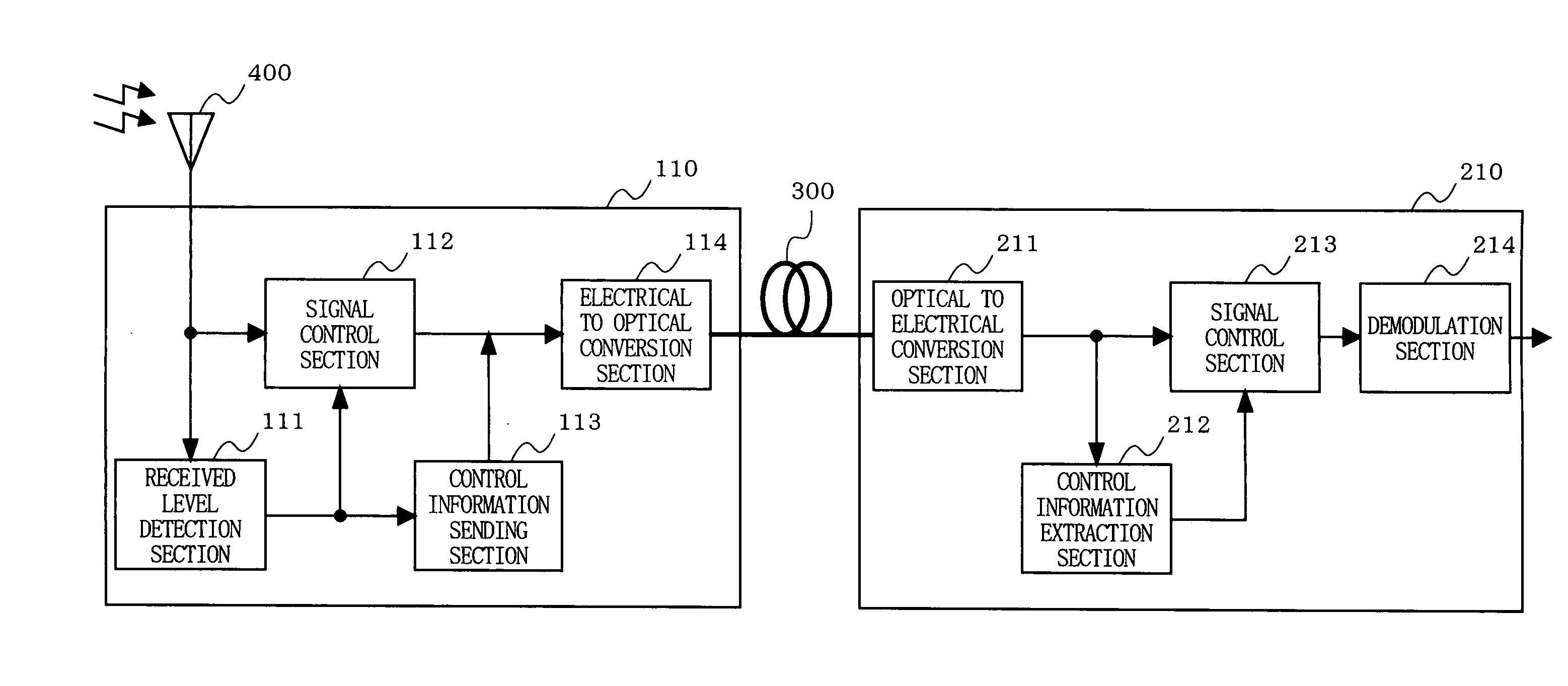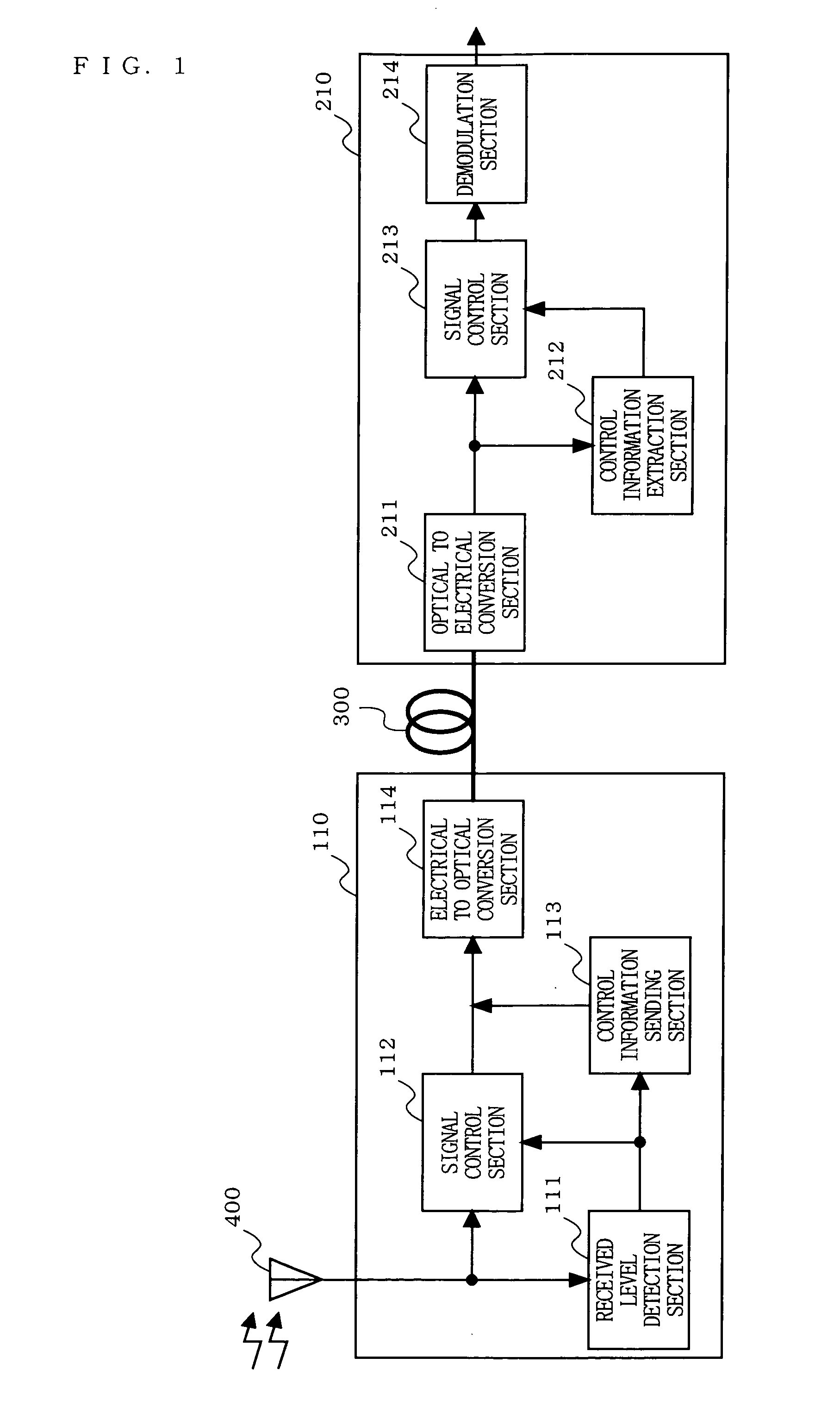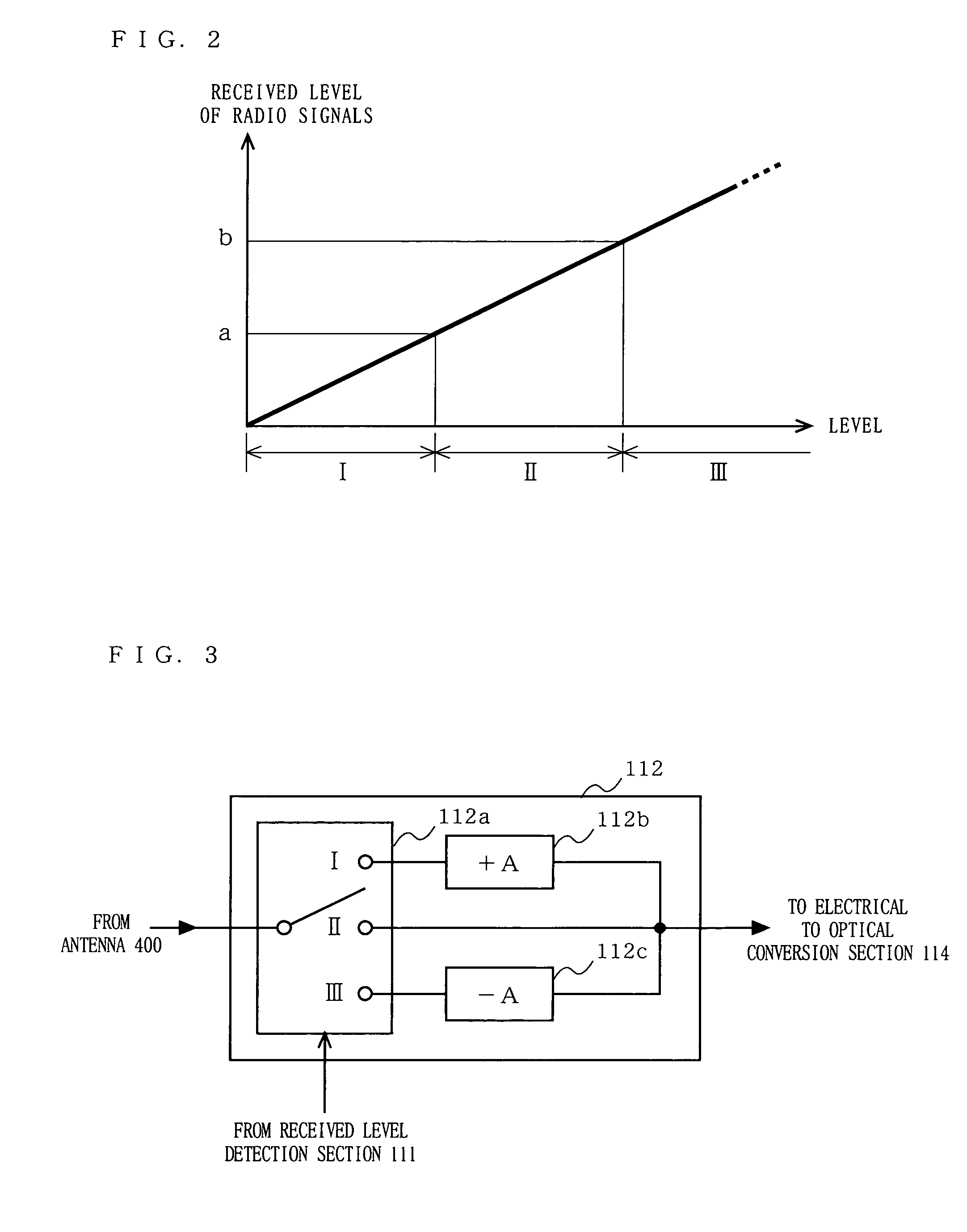Optical fiber radio transmission system, transmission device, and reception device
a transmission system and optical fiber technology, applied in the direction of optical elements, electromagnetic transceivers, instruments, etc., can solve the problems of inaccurate modulation, narrowed and so as to prevent the deterioration of transmission performance and improve the reception dynamic range of radio signals. , the effect of preventing the loss of linearity of input signals
- Summary
- Abstract
- Description
- Claims
- Application Information
AI Technical Summary
Benefits of technology
Problems solved by technology
Method used
Image
Examples
first embodiment
[0085]FIG. 1 is a block diagram illustrating a configuration of an optical fiber radio transmission system according to a first embodiment of the present invention. In FIG. 1, the optical fiber radio transmission system according to the first embodiment has a configuration in which a transmitting unit 110 and a receiving unit 210 are connected via an optical fiber 300. The transmitting unit 110 includes a received level detection section 111, a signal control section 112, a control information sending section 113, and an electrical to optical conversion section 114. The receiving unit 210 includes an optical to electrical conversion section 211, a control information extraction section 212, a signal control section 213, and a demodulation section 214.
[0086] First, operations of the components of the transmitting unit 110 will be described. The received level detection section 111 detects the received level of a radio signal received at an antenna 400, and determines which of a plur...
second embodiment
[0100]FIG. 10 is a block diagram illustrating a configuration of an optical fiber radio transmission system according to a second embodiment of the present invention. In FIG. 10, the optical fiber radio transmission system according to the second embodiment has a configuration in which a transmitting unit 120 and the receiving unit 210 are connected via the optical fiber 300. The transmitting unit 120 includes a hysteresis received level detection section 121, the signal control section 112, the control information sending section 113, and the electrical to optical conversion section 114. The receiving unit 210 includes the optical to electrical conversion section 211, the control information extraction section 212, the signal control section 213, and the demodulation section 214.
[0101] As is apparent from FIG. 10, the optical fiber radio transmission system according to the second embodiment differs from the optical fiber radio transmission system according to the above-described ...
third embodiment
[0106]FIG. 12 is a block diagram illustrating a configuration of an optical fiber radio transmission system according to a third embodiment of the present invention. In FIG. 12, the optical fiber radio transmission system according to the third embodiment has a configuration in which a transmitting unit 130 and the receiving unit 230 are connected via the optical fiber 300. The transmitting unit 130 includes the received level detection section 111, the signal control section 112, a control voltage conversion section 131, a V-f conversion section 132, and the electrical to optical conversion section 114. The control voltage conversion section 131 and the V-f conversion section 132 correspond to the control information sending section 113, which has been described in the above-described first embodiment. The receiving unit 230 includes the optical to electrical conversion section 211, a lowpass filter (LPF) 231, an f-V conversion section 232, a highpass filter (HPF) 233, the signal c...
PUM
 Login to View More
Login to View More Abstract
Description
Claims
Application Information
 Login to View More
Login to View More - R&D
- Intellectual Property
- Life Sciences
- Materials
- Tech Scout
- Unparalleled Data Quality
- Higher Quality Content
- 60% Fewer Hallucinations
Browse by: Latest US Patents, China's latest patents, Technical Efficacy Thesaurus, Application Domain, Technology Topic, Popular Technical Reports.
© 2025 PatSnap. All rights reserved.Legal|Privacy policy|Modern Slavery Act Transparency Statement|Sitemap|About US| Contact US: help@patsnap.com



